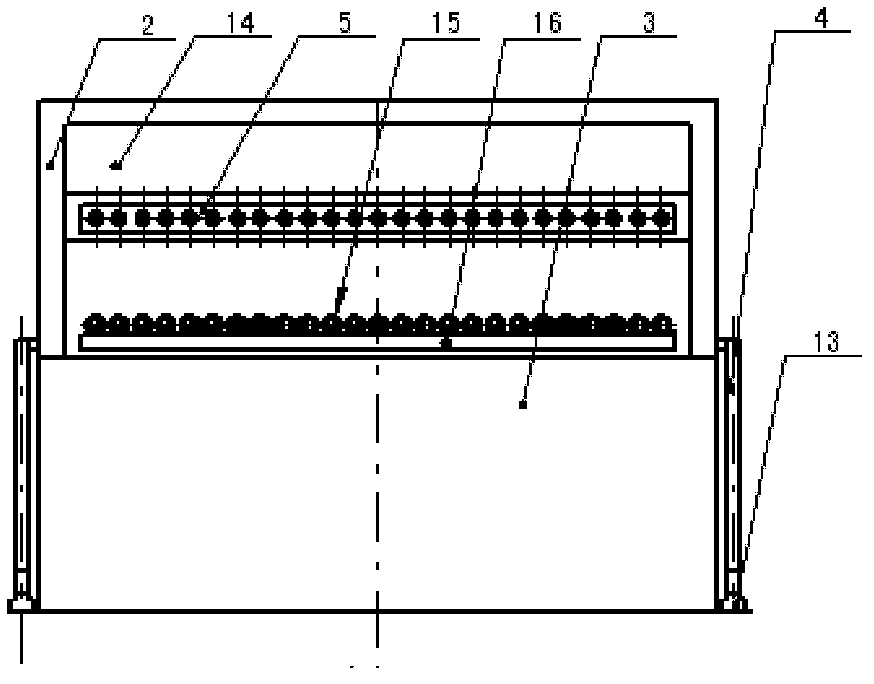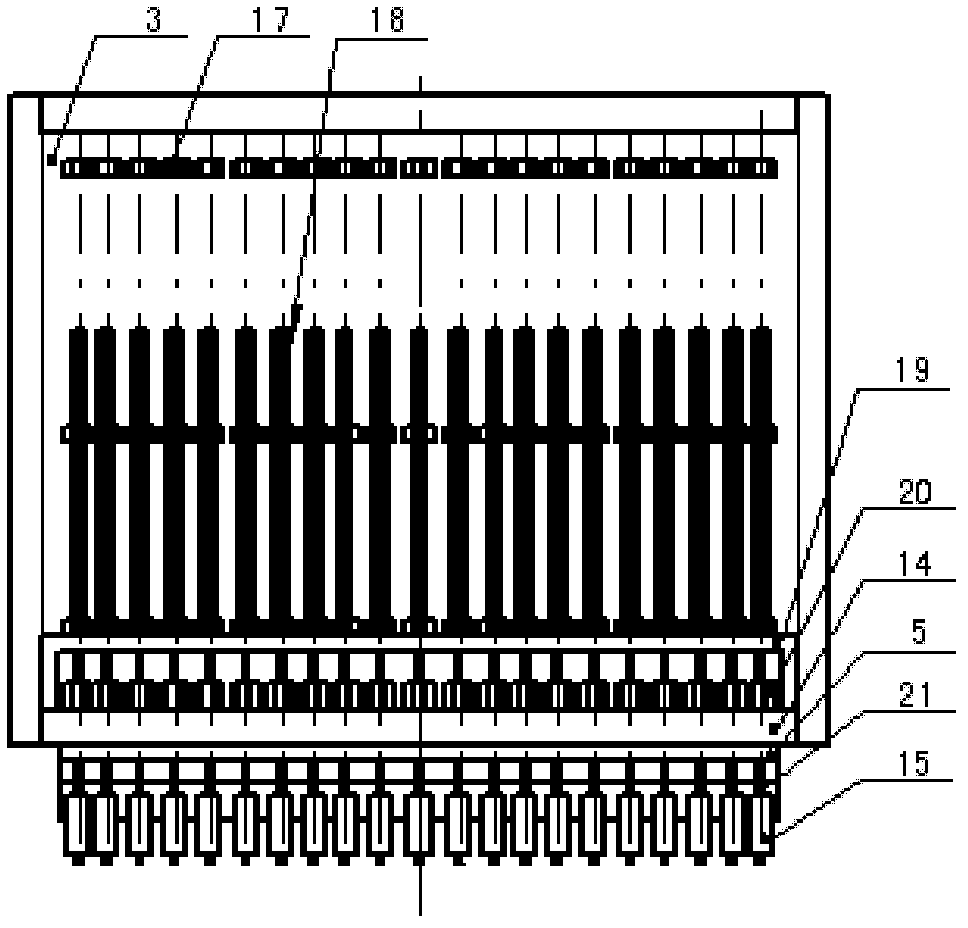Manufacturing process of vacuum glass
A technology of vacuum glass and manufacturing process, which is applied in the direction of glass manufacturing equipment, manufacturing tools, glass forming, etc., and can solve problems affecting the quality of vacuum glass, insufficient vacuum degree, complex structure, etc., to achieve continuous production and improve vacuum degree , the effect of large operating space
- Summary
- Abstract
- Description
- Claims
- Application Information
AI Technical Summary
Problems solved by technology
Method used
Image
Examples
Embodiment Construction
[0023] The present invention will be further described in detail below in conjunction with the accompanying drawings and through specific embodiments. The following embodiments are only descriptive, not restrictive, and cannot limit the protection scope of the present invention.
[0024] In order to clearly describe the embodiment of the present invention, the manufacturing system of the present invention will be described first.
[0025] see figure 1 , 2 3. The manufacturing system includes a high-temperature heating box and a low-temperature heating furnace. The high-temperature heating box is composed of a sealing box cover door 10 and a heating box 11. The sealing box cover door is a door-type structure, and the sealing cover is installed on the heating box. The sealing box cover Both the door and the heating box are equipped with thermal insulation materials, and a mobile bracket 12 is installed on both sides of the sealed box cover door. The lower end of the mobile brac...
PUM
 Login to View More
Login to View More Abstract
Description
Claims
Application Information
 Login to View More
Login to View More - R&D
- Intellectual Property
- Life Sciences
- Materials
- Tech Scout
- Unparalleled Data Quality
- Higher Quality Content
- 60% Fewer Hallucinations
Browse by: Latest US Patents, China's latest patents, Technical Efficacy Thesaurus, Application Domain, Technology Topic, Popular Technical Reports.
© 2025 PatSnap. All rights reserved.Legal|Privacy policy|Modern Slavery Act Transparency Statement|Sitemap|About US| Contact US: help@patsnap.com



